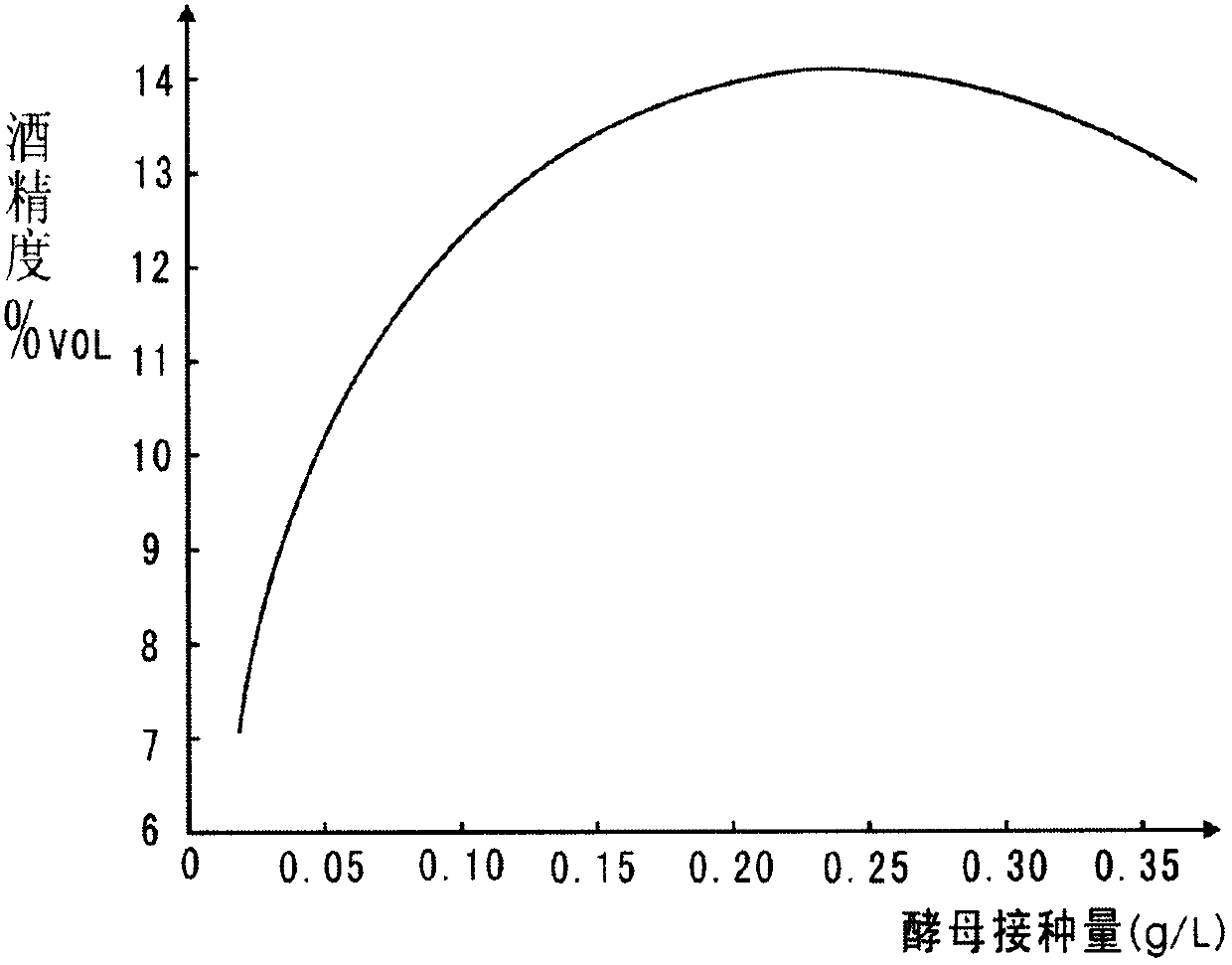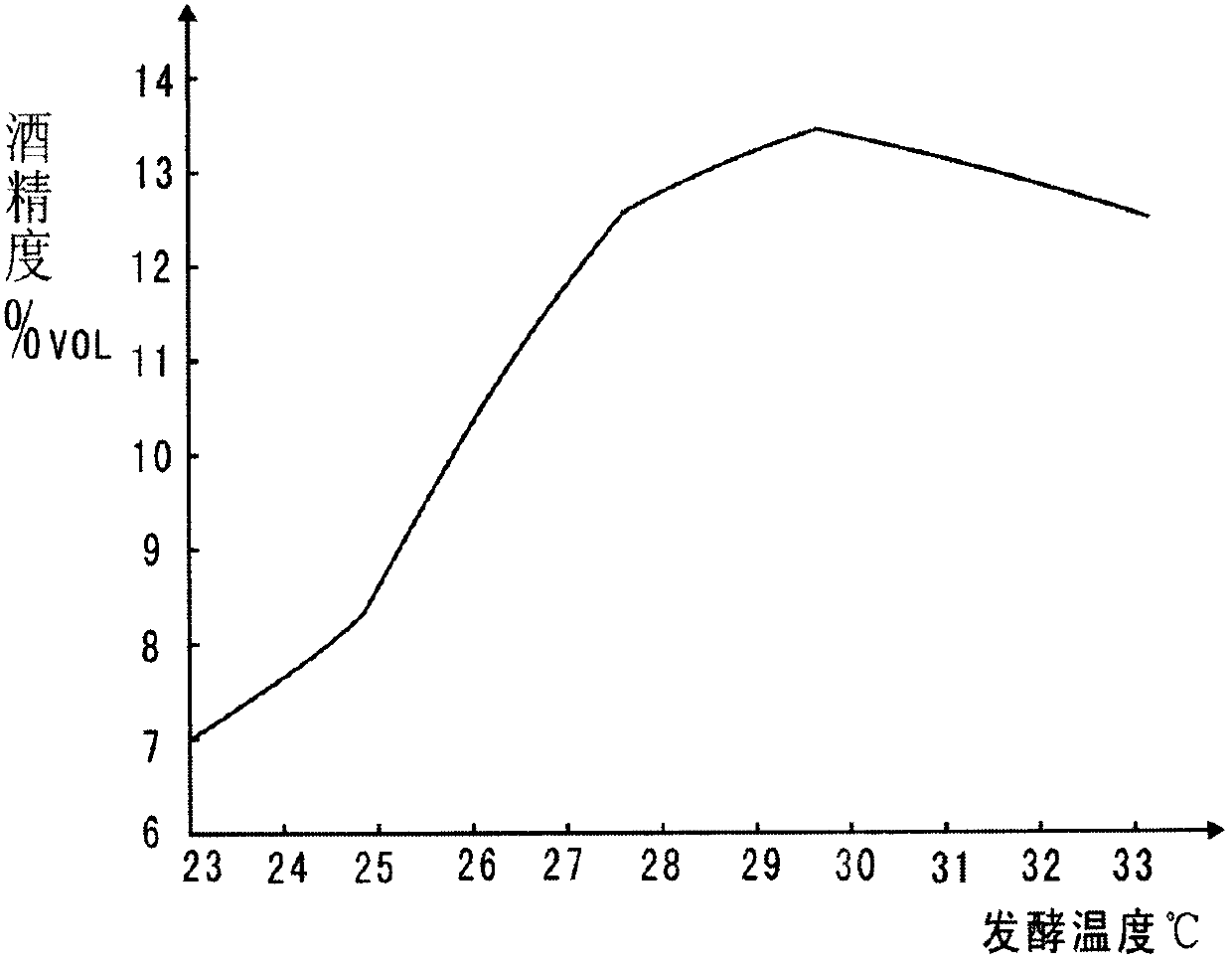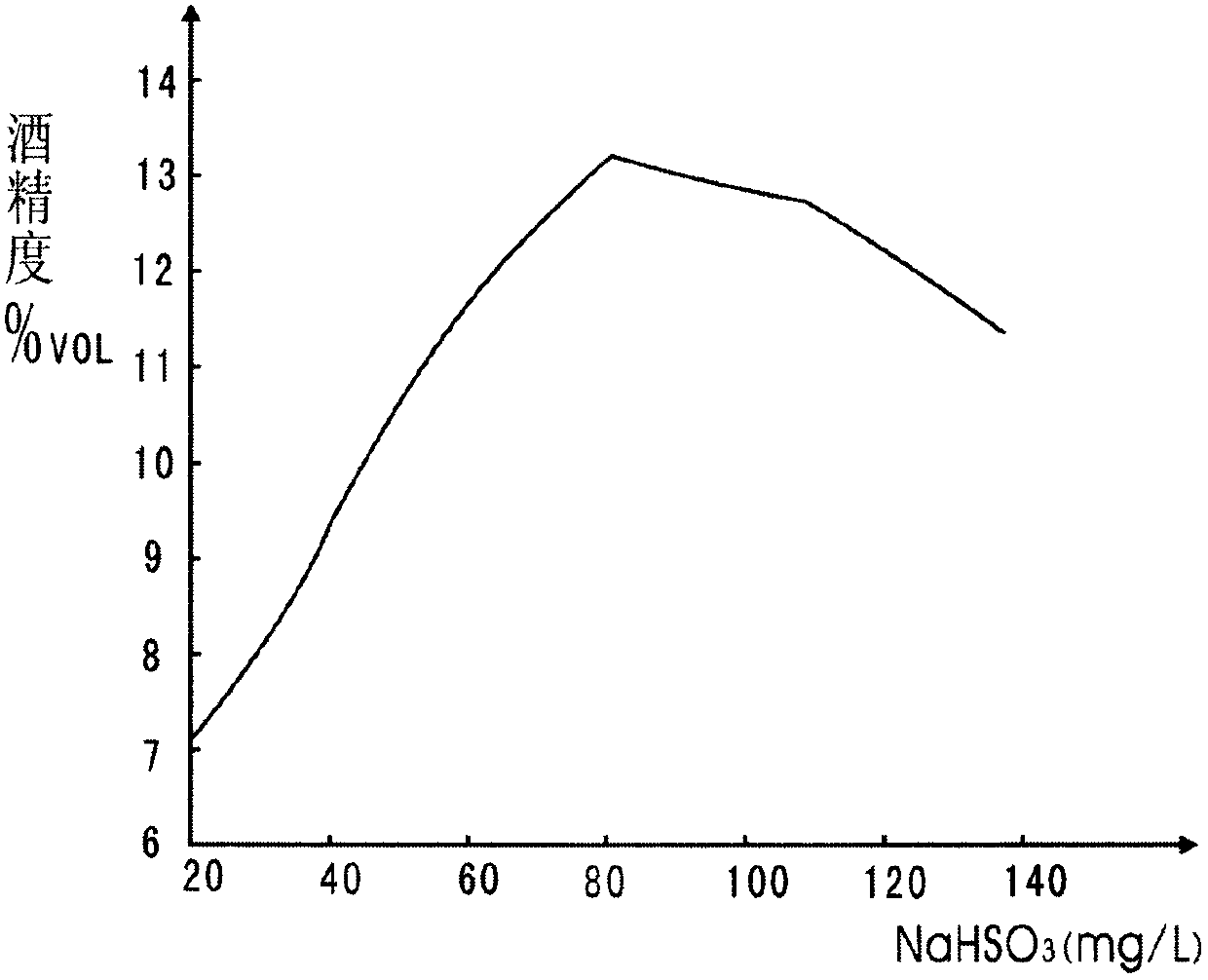Method for producing olive wine by using olive fruit juice through fermentation
A technology for olive oil and olive wine, applied in the directions of microorganism-based methods, biochemical equipment and methods, and preparation of alcoholic beverages, can solve the problems of pollution and waste, low technical content, and low product grades, and achieve social maintenance. Stable, increasing economic benefits, suitable for promotion and popularization
- Summary
- Abstract
- Description
- Claims
- Application Information
AI Technical Summary
Problems solved by technology
Method used
Image
Examples
Embodiment 1
[0026] Using olive juice water as raw material, olive wine is processed according to the following steps:
[0027] (1) Process the olive juice water according to the following steps:
[0028] a. Deastringency: adding NaOH with a concentration of 0.4% and Na with a concentration of 100ppm 2 SO 3 (analytical pure), adjust the pH value to 8, keep at 60-70°C for 10-20 minutes, and keep stirring, then cool to room temperature, add citric acid with a concentration of 0.5%, and adjust the pH value to 4-5;
[0029] b. Enzymolysis: use 20mL / t of pectinase at 50°C for 1 hour;
[0030] c. Filter.
[0031] (2) ferment the treated olive juice water according to the following steps:
[0032] A, supplement sugar: supplement white granulated sugar until sugar accounts for 20% of the total mass of the olive fruit juice;
[0033] B, adjust the pH value: adjust the pH value to 3 with citric acid and NaOH;
[0034] C. Activate wine yeast, rice wine yeast and root enzyme koji with water belo...
Embodiment 2
[0047] Using olive juice water as raw material, olive wine is processed according to the following steps:
[0048] (1) Process the olive juice water according to the following steps:
[0049] a. Deastringency: adding NaOH with a concentration of 0.4% and Na with a concentration of 120ppm 2 SO 3 (analytical pure), adjust the pH value to 9, keep at 60-70°C for 10-20 minutes, and keep stirring, then cool to room temperature, add 0.5% citric acid, adjust the pH value to 4-5;
[0050] b. Enzymolysis: Use 30mL / t of pectinase for 1 hour at 50°C;
[0051] c. Filter.
[0052] (2) ferment the treated olive juice water according to the following steps:
[0053] A, supplement sugar: supplement white granulated sugar until sugar accounts for 25% of the total mass of the olive fruit juice;
[0054] B, adjust the pH value: adjust the pH value to 3.5 with citric acid and NaOH;
[0055] C. Activate wine yeast, rice wine yeast and root enzyme koji with water below 40°C for 0.5 hours to pr...
Embodiment 3
[0068] Using olive juice water as raw material, olive wine is processed according to the following steps:
[0069] (1) Process the olive juice water according to the following steps:
[0070] a. Deastringency: adding NaOH with a concentration of 0.4% and Na with a concentration of 150ppm 2 SO 3 (analytical pure), adjust the pH value to 10, keep at 60-70°C for 10-20 minutes, and keep stirring, then cool to room temperature, add citric acid with a concentration of 0.5%, and adjust the pH value to 4-5;
[0071] b. Enzymolysis: use 35mL / t of pectinase for 1 hour at 50°C;
[0072] c. Filter.
[0073] (2) ferment the treated olive juice water according to the following steps:
[0074] A, supplement sugar: supplement white granulated sugar until the sugar content accounts for 30% of the total mass of the olive fruit juice;
[0075] B, adjust the pH value: adjust the pH value to 4 with citric acid and NaOH;
[0076] C. Activate wine yeast, rice wine yeast and root enzyme koji wi...
PUM
 Login to View More
Login to View More Abstract
Description
Claims
Application Information
 Login to View More
Login to View More - R&D
- Intellectual Property
- Life Sciences
- Materials
- Tech Scout
- Unparalleled Data Quality
- Higher Quality Content
- 60% Fewer Hallucinations
Browse by: Latest US Patents, China's latest patents, Technical Efficacy Thesaurus, Application Domain, Technology Topic, Popular Technical Reports.
© 2025 PatSnap. All rights reserved.Legal|Privacy policy|Modern Slavery Act Transparency Statement|Sitemap|About US| Contact US: help@patsnap.com



